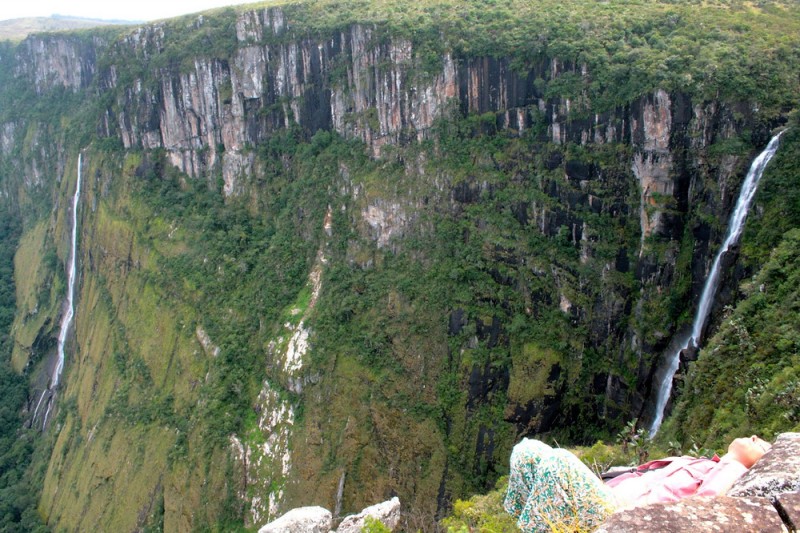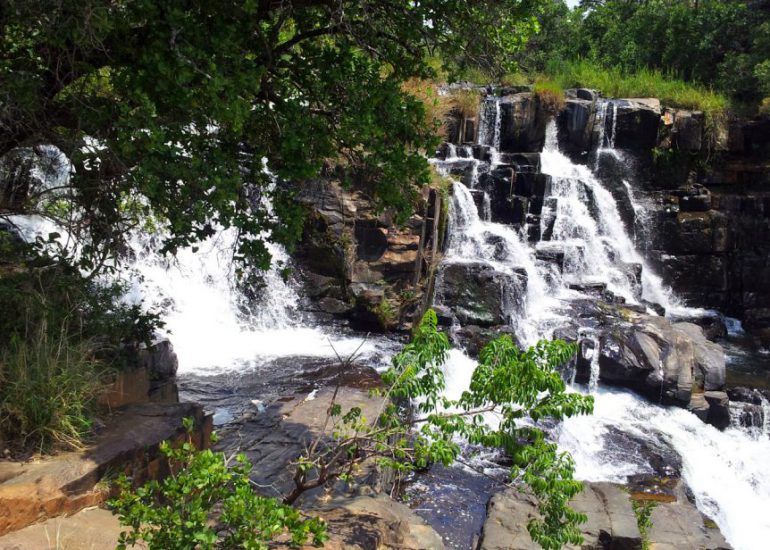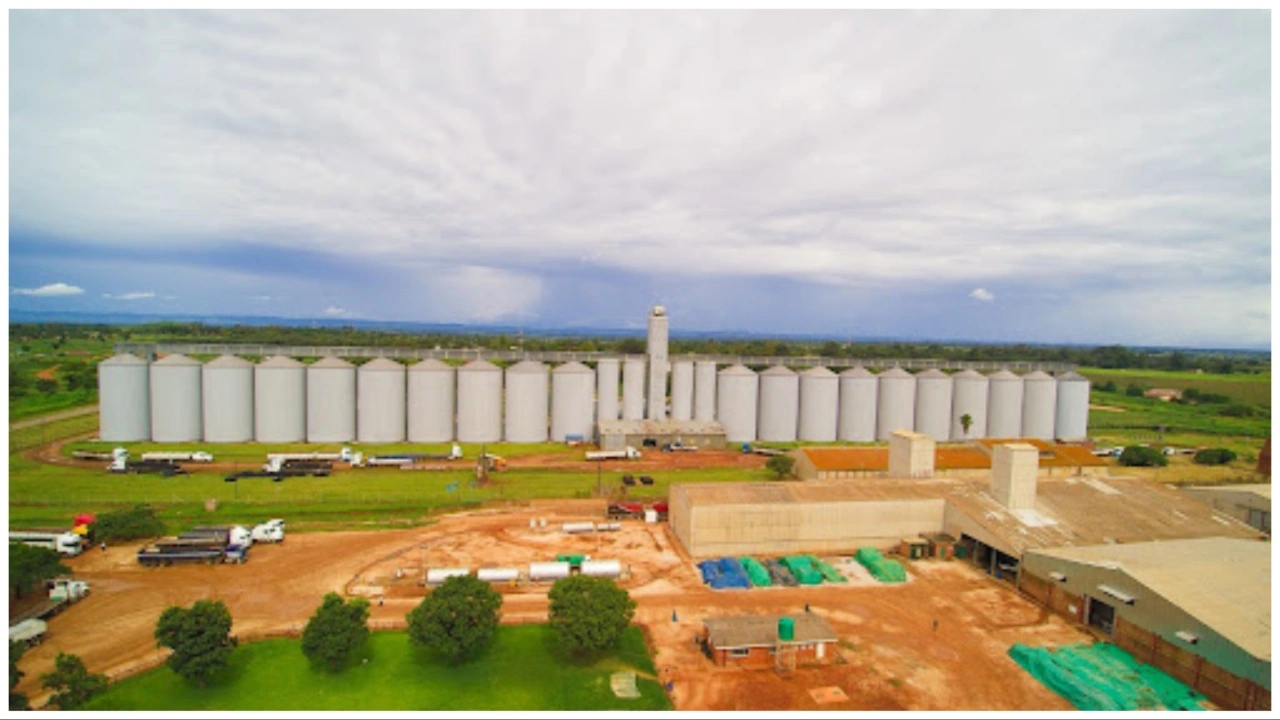Honde Valley, extending from the eastern border of Zimbabwe into Mozambique, is nestled within the Eastern Highlands.
Located approximately 130 kilometres (81 miles) from Mutare and 110 kilometres (68 miles) from Nyanga, the valley is framed by the Nyanga Mountains and the Nyanga National Park to the west.

Honde Valley. Picture credit to ihararejobs.com/blog
ALSO READ: https://zimprofiles.com/journey-through-chinhoyi-history-culture-and-the-silent-pool/
Name Origin
There are several possibilities based on different sources and local languages:
1. Shona Language:
- “Honde” could translate to “river” or “spring” in the Shona language, spoken by the majority in Zimbabwe. This could refer to the numerous rivers and streams flowing through the valley.
- However, without specific historical records or oral traditions confirming this connection, it remains inconclusive.
2. Venda Language:
- The Venda people also lived in parts of Zimbabwe, primarily in the Masvingo Province where Honde Valley is located.
- In Venda, “hondi” translates to “place of honey”, potentially referencing the valley’s past abundance of beehives and honey production.
- Similar to the Shona possibility, historical confirmation would be needed to solidify this connection.
3. Indigenous Names:
- Before colonization, local communities might have used different names for the valley in their languages. Unfortunately, these names often haven’t been documented or passed down through generations.
4. Colonial Influence:
- During the colonial period, European settlers sometimes renamed locations based on their interpretations or convenience. It’s possible “Honde” could have been a modification of an existing indigenous name or a completely new invention.
Further Research:
- To pinpoint the origin more accurately, consider exploring these avenues:
- Consult historical records, maps, and documents from the colonial era and before.
- Engage with local communities and elders who might know the valley’s traditional names and their meanings.
- Analyze the linguistic structure and etymology of “Honde” in relevant languages.
A Brief History
With its roots embedded in the Eastern Highlands, Honde Valley’s history is closely tied to its geography.
The valley, a major tea-producing area, has seen economic activities such as tea and coffee cultivation thriving alongside small-scale and subsistence farming.

Get To Know Honde Valley. picture credit to fambayi
Honde Valley: A Story of Resilience and Transformation
The Honde Valley, nestled in Zimbabwe’s Eastern Highlands, boasts a rich history interwoven with diverse communities, colonial struggles, and agricultural adaptations. Here’s a glimpse into its journey:
Early Inhabitants and Pre-Colonial Life:
- The valley’s earliest known inhabitants date back to Stone Age hunter-gatherers, leaving behind tools and settlements around 50,000 years ago.
- By the Iron Age, Bantu-speaking ancestors of the Shona people arrived, practising subsistence farming and establishing communities.
- Their social structures, centred around kinship and ancestor veneration, shaped the valley’s cultural landscape.
- Trade flourished, connecting the valley to broader regional networks.
Colonial Arrival and Disruption:
- In the late 19th century, British expansion brought significant changes.
- The valley, named “Honde” possibly referring to its rivers or honey abundance, attracted European settlers interested in gold mining and commercial agriculture.
- Land dispossession and forced labour under the Rhodesian regime disrupted traditional livelihoods and social structures.
- Resistance movements emerged, with the valley playing a part in the wider struggle for Zimbabwean independence.
Struggles and Resilience During the Liberation War:
- The Zimbabwean liberation war (1970s-1980s) saw the Honde Valley become a strategic battleground due to its proximity to Mozambique.
- Both guerrilla fighters and government forces operated in the area, leading to displacement, violence, and hardship for civilians.
- Despite the challenges, communities demonstrated remarkable resilience, adapting their lives and finding ways to survive and resist.
Post-Independence and New Challenges:
- After independence in 1980, the valley faced economic difficulties and ongoing land ownership disputes.
- Focus on commercial agriculture, particularly tea and bananas, offered some opportunities but led to environmental concerns and social inequalities.
- Communities continued to adapt, with diversification into ecotourism, small-scale farming, and community-based initiatives offering hope for the future.
Present Day and Looking Ahead:
- The Honde Valley remains a vibrant and diverse community grappling with complex challenges like poverty, climate change, and limited infrastructure.
- However, its rich history, cultural heritage, and spirit of resilience continue to inspire and shape its future.
- Initiatives promoting sustainable development, cultural preservation, and community empowerment hold promise for a brighter future for the valley and its people.
Further Exploration:
- This overview merely scratches the surface. Dive deeper by exploring:
- The lives and experiences of individuals and communities throughout history.
- The impact of colonialism and the liberation war on the valley’s social fabric.
- The challenges and opportunities of contemporary development efforts.
- The unique cultural traditions and practices of the valley’s inhabitants.
Culture around
ALSO READ: https://zimprofiles.com/exploring-rusape-culture-climate-and-historical-significance/
The Vibrant Tapestry of Culture in Honde Valley:

Get To Know Honde Valley. picture credit to frank kays photos
Honde Valley, cradled in the Eastern Highlands of Zimbabwe, boasts a rich and diverse cultural tapestry woven from its fascinating history, resilient communities, and deep connection to the land. Here’s a glimpse into some key aspects of its cultural landscape:
1. Traditions and Ceremonies:
- Spirituality: Ancestral veneration plays a central role, with rituals and ceremonies honouring ancestors seeking guidance and blessings. Offerings, songs, and dances connect the living to the departed.
- Music and Dance: Mbira music, with its distinctive plucked tones, fills the air during celebrations and rituals. Energetic dances like “Jerusarema” showcase joy and community spirit.
- Folktales and Proverbs: Storytelling keeps traditions alive, passing down knowledge, values, and lessons through generations. Proverbs offer wisdom and wit in everyday life.
2. Food and Agriculture:
- Subsistence Farming: Traditionally, families grow crops like maize, millet, and vegetables for sustenance. Bananas, a major cash crop, also contribute to local cuisine.
- Traditional Dishes: Sadza, a thick maize porridge, is a staple. Vegetables like nyama (cowpeas) and derere (greens) are popular, often cooked with meat or fish. Honey, once abundant, sweetens dishes.
- Food Sharing and Feasts: Communal meals during ceremonies or gatherings highlight sharing and social connection. Local delicacies like chikanda (dried meat) and maputi (sour porridge) are often shared.
3. Crafts and Artisanship:
- Basket Weaving: Skilled artisans craft intricate baskets with sisal and other natural fibres, used for storage, carrying, and ceremonial purposes.
- Woodcarving: Animals, spirits, and everyday objects are carved from wood, showcasing creativity and storytelling.
- Beadwork: Vibrant beadwork adorns clothing, jewellery, and household items, reflecting the individual style and cultural significance.
4. Clothing and Adornment:
- Traditional Attire: Women wear wraparound skirts (zambia) and headwraps (duku), often adorned with beads and patterns. Men wear loincloths (chitenge) and shirts.
- Contemporary Fusion: Modern fashions blend with traditional elements, reflecting changing times while preserving cultural identity.
- Body Art: Scarification and bead embellishments on the face and body hold various meanings, marking life stages or expressing individual identity.
5. Social Structure and Values:
- Community is central: Respect for elders, cooperation, and shared responsibility are highly valued. Traditional leadership structures, often headed by chiefs, maintain social order and cultural practices.
- Ubuntu Philosophy: The concept of “ubuntu,” emphasizing humanity and interconnectedness, shapes social interactions and community spirit.
- Hospitality: Visitors are warmly welcomed, reflecting the open and generous nature of the people.
Geographical Location
Situated about 130 kilometres from Mutare or 110 kilometres from Nyanga, Honde Valley’s geographical features include abrupt topography, creating spectacular attractions like the Mtarazi and Muchururu Falls.
The valley’s altitude of around 900m above sea level sets it apart from its surroundings.
Honde Valley stretches across parts of Zimbabwe and Mozambique, but the portion typically referred to as the “Honde Valley” lies entirely within Zimbabwe’s Eastern Highlands. Here’s a breakdown of its location:
Country: Zimbabwe Province: Manicaland (Eastern Zimbabwe) District: Mutasa
Boundaries:
- West: Nyanga Mountains and Nyanga National Park
- South: Range with Mt Rupere (2,030 m) and Mt Chinyamariro (1,900 m)
- East: Gurungwe Mountain (1,885 m) on the Mozambique border
- North: Extends into Mozambique
Coordinates:
- The general coordinates for the valley can be considered 18°30′S 32°50′E. However, due to its length and shape, the specific coordinates will vary depending on the point of reference within the valley.
- For a more precise location, you can specify which part of the valley you’re interested in, such as a specific town or village.
Additional Information:
- The Honde Valley is approximately 500 square kilometres in size within Zimbabwe.
- The Honde River, a tributary of the Pungwe River, flows through the valley.
- The valley’s elevation ranges from 900 meters to 1,800 meters above sea level.
Climate
Honde Valley experiences a temperate climate with distinct seasons. From late October to the end of April, the summer months bring hot and humid weather with temperatures reaching up to 28 ˚C.
The winter season, from May to the beginning of July, brings low temperatures, and spring, from September to October, is characterised by hot weather.
ALSO READ: https://zimprofiles.com/exploring-bindura-mashonaland-central/
Topography
The valley’s topography includes low-lying areas, hot conditions, and an abrupt drop in altitude, resulting in scenic waterfalls like Mtarazi and Muchururu Falls.
Flora and Fauna

Get To Know Honde Valley. picture credit to Frank kays photos
Extensively cultivated, the valley’s 500 square kilometres feature tea estates and small-scale farms. The valley’s biodiversity includes a variety of bird species, making it a premier birding destination. Notable fauna includes Anchieta’s tchagra, moustached grass-warbler, and red-faced Crimsonwing.
Water Resources
Honde Valley relies on small piped systems, motorised pumps, and riparian village communities for its water supply. Irrigation schemes and water supply installations contribute to sustaining the agricultural activities in the region.
Economy
The valley’s economy thrives on tea and coffee cultivation, with tea estates like Katiyo, Aberfoyle, Rumbizi, and Chiwira making significant contributions. It is also home to small-scale and subsistence farmers. Hauna Growth Point, a township in the valley, serves as a centre for Mutasa District.
Electricity Generation
Projects like Nyamhingura, Duru, Pungwe A, B & C, and Hauna Power Stations contribute to electricity generation in the region, managed by Nyangani Renewable Energy (Pvt) Ltd.
Schools in Honde Valley
Honde Valley boasts a diverse range of schools catering to different educational needs and age groups. Here’s a list of some notable schools:
Secondary Schools:
- Sagambe High School: Situated near the Nyamutsaka River, offering academic and vocational programs.
- Chavhanga Secondary School: Located in the eastern part of the valley, known for its strong science and mathematics program.
- Chisuko Secondary School: Situated in the central part of the valley, known for its agricultural and environmental studies focus.
- Muterere High School: Located in the northern part of the valley, known for its strong sporting program.
- St Columbus High School: A private Catholic school offering a faith-based education.
- Munyuku Secondary School: Located in the southern part of the valley, known for its focus on technical and vocational training.
- Nyamhingura Secondary: Situated in the central part of the valley.
- Ngarura Secondary School is located in the eastern part of the valley.
- Gatsi High School: Situated in the northern part of the valley.
- Rupinda Secondary School is located in the southern part of the valley.
- St Peters Mandeya Secondary School: Situated in the central part of the valley.
- Sahumani Secondary School is located in the eastern part of the valley.
- Samaringa High School: Situated in the northern part of the valley.
- Muparutsa Secondary School: Located in the southern part of the valley.
- St Peters Jombe Secondary School: Situated in the western part of the valley.
Primary Schools:
- Eastern Highlands Primary School: Located in the eastern part of the valley.
- Many more primary schools are spread across the different wards of Honde Valley.
Tertiary Institutions:
- Honde Mission Technical Training College: Offers technical and vocational training programs.
- Dzidzai Technical College: Offers technical and vocational training programs.
Important Note:
- This list is not exhaustive, and the most suitable school for your child will depend on individual needs, preferences, and location within the valley.
- It’s recommended to directly contact the schools for specific information about admissions, curriculum, and facilities.
- Some schools might require additional information like entrance exams or interviews when applying.

Get To Know Honde Valley. picture credit to Zim travel Authority
Places To Visit
- Aberfoyle Estates
- Honde Bridge Overstream
- Nyawamba Dam
- Aberfoyle Country Club
- Mtarazi Falls
- Pungwe River
- Nyanga National Park
- Chipote (Kapunga) Falls
- Honde View
- Mahwemasimike Range
ALSO READ: https://zimprofiles.com/getting-to-know-kariba-chronicles-balancing-progress-and-conservation/
Honde Valley Council Contacts
For information related to the Honde Valley Council, further details can be obtained by contacting relevant local authorities or the Urban Councils Association of Zimbabwe (UCAZ).
Contact Details; Phone. (03) 6264 0300; Address. Huon Valley Council, 40 Main Street Huonville, TAS, 7109; Post. PO Box 210 Huonville
References
- Wikipedia – Honde Valley
- Author: Various
- Date Published: Various



